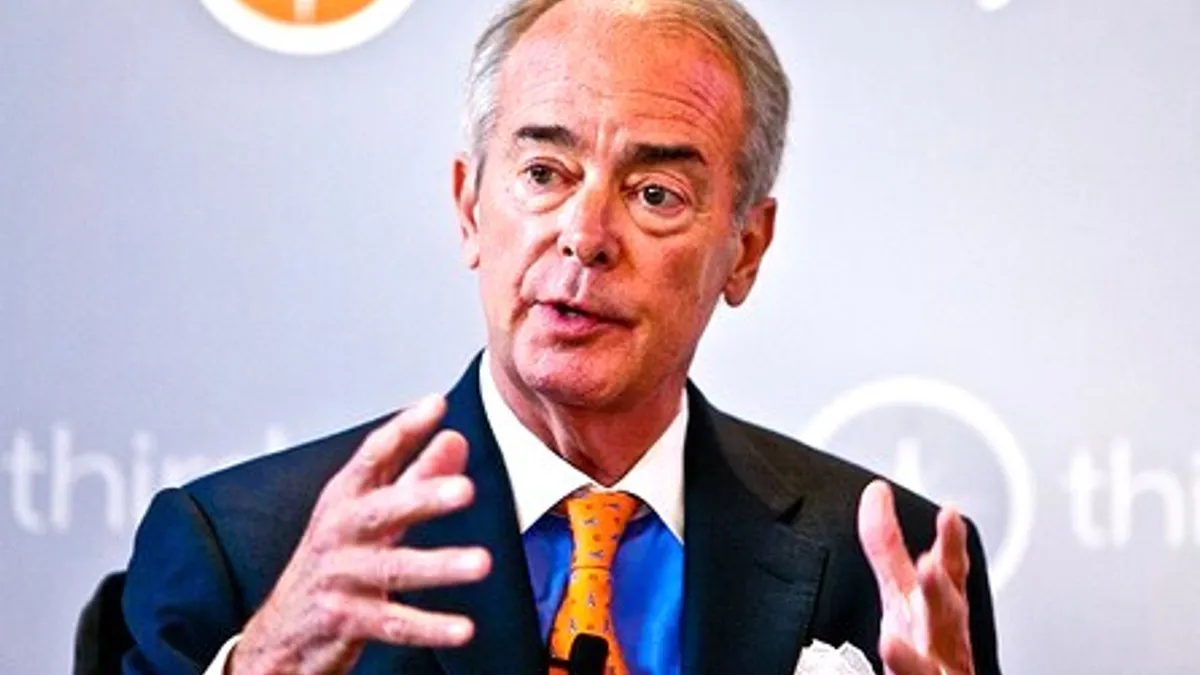Despite Q1 profit snags, utility CEOs are planning investments worth billions of dollars.
In some cases, utilities are re-writing the utility business model; in others, utilities are having it re-written for them, due to slipping wholesale electricity prices and rising operating expenses.
With Q1 officially over, here’s a recap of what happened in Q1 for the five biggest U.S. utilities and what their plans are for the future:
DUKE ENERGY
“Too often, big means slow and complacent. In contrast, we intend to be agile and innovative.”
— CEO Jim Rogers
Q1 recap: Duke Energy’s Q1 earnings doubled due to rate hikes and prolonged wintry weather. But the falling price of electricity in the PJM Interconnection undercut Duke’s earnings from coal and gas generation.
Looking ahead: At the company's shareholder’s meeting, Duke CEO Jim Rogers revealed an expansive growth plan to spark better returns. This year, Duke will activate two new plants, pursue rate hikes in five regions, optimize its nuclear fleet and complete its merger with Progress Energy. Energy efficiency will also figure greatly in plans.
“The most environmentally benign plant we build is the one we don’t build, and that’s why we invest a lot into energy efficiency,” Rogers said.
PG&E
“We’re not going to become the utility we aspire to be overnight. But we are focused on the right things, we are staying true to our word, and we are building a better PG&E.”
— CEO Tony Earley said at PG&E's annual shareholders' meeting on May 6
Q1 recap: PG&E Corp. posted a 2.6% profit increase this quarter despite spending $1.4 billion on safety work after the 2010 pipeline explosion on San Bruno California. Now, the city of San Bruno is pushing for PG&E to pay $2.25 billion in fines to the state.
Looking ahead: While PG&E’s reputation gets the boot, the company has big plans for the Pacific Gas and Electric Co. in San Francisco. For starters, PG&E started construction on a new smart grid control center in Concord and will build two more to improve its 141,000-mile electric distribution system. PG&E also plans to advance rate reform and energy efficiency programs, with hopes to win over disenchanted customers.
EXELON
“It's the fourth best quarter in the history of Exelon from a capacity factor standpoint.”
— CEO Christopher M. Crane said in an earnings call on May 1
Q1 recap: Exelon Corp. lost profit this quarter due to higher costs of nuclear fuel and lower market prices. Still, Exelon’s nuclear fleet capacity increased to 96.4% from 93.6% the same quarter last year.
Looking ahead: Now Exelon, which owns ComEd, PECO, and BGE, is looking past power plants to jumpstart profits. In fact, Exelon will spend $13.5 billion to upgrade grids in Illinois, Pennsylvania and Maryland and is considering investing $3 billion in natural gas exploration and solar farms. Exelon will also retire 19,000 MW of coal-fired electricity by 2015 and decrease bets on expected generation.
EDISON INTERNATIONAL
“It would be foolish to dismiss the potential for major changes in the utility business model.”
— CEO Theodore F. Craver said in an earnings call onApril 30
Q1 recap: Edison International’s Q1 earnings increased 41% due in part to a rate hike approved for Southern California Edison. In addition, Edison Energy Mission, which owns dozens of power plants, posted a profit after filing for bankruptcy in December.
Looking ahead: CEO Theodore Craver didn’t bat an eye regarding Edison’s need to innovate the utility business model. In the coming years, Edison will invest in more services such as distributed generation, electrification of transportation, water purification and power management for commercial and industrial clients.
And this June, Edison will launch a 479-megawatt natural gas-fired plant near Los Angeles to offset the closing of its San Onofre nuclear power plant in January 2012.
NEXTERA ENERGY
“It was our best ever safety year. We had our best ever year in reliability.”
— CEO James L. Robo told shareholders on March 12
Q1 recap: NextEra ,which owns Florida Power & Light Co. (FPL), saw a 41% drop in first quarter earnings compared to last year. Operating expenses and low power prices were mostly to blame.
Looking ahead: But CEO James Robo remains optimistic. The company’s $6-8 billion invested in FPL and Energy Resources is expected to tip NextEra's value to $6 a share by 2016. Recently, NextEra completed FPL’s 4.5 million smart meter installs, added more than 500MW of nuclear energy and installed 1,500MW of wind power in 2012.
NextEra’s long-term plan is to improve operations, maintenance and productivity while tapping $4-5 billion of incremental capital deployment opportunities at FPL.
Would you like to see more utility and energy news like this in your inbox on a daily basis? Subscribe to our Utility Dive email newsletter! You may also want to read Utility Dive's look at 11 Twitter accounts you should follow for smart grid expertise.














